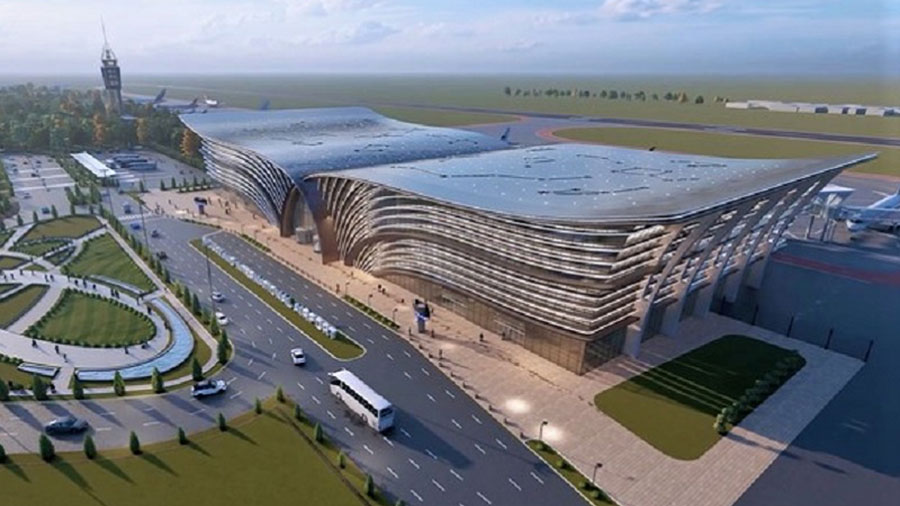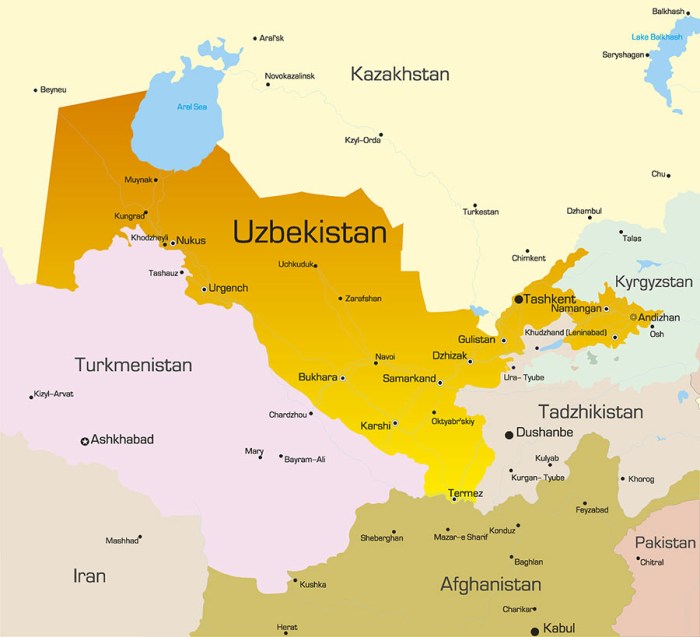Samarkand Airport Redevelopment Reopens For Shanghai Cooperation Organisation & World Tourism Summits

It’s not a BRI project as no Chinese financing is involved, but the redevelopment of Uzbekistan’s Samarkand international airport has regional implications with it reopening in March 2022.
The project cost for the reconstruction reached US$130 million, with a rebuild of the runway completed in October 2021, and the construction of a new terminal just finished. Additional road infrastructure, parking and lighting system are also now being finished.
The new terminal will be able to serve 1,000 passengers per hour up from 350, while the annual passenger traffic is projected to jump from 460,000 to two million a year, upon completion of the expansion. The flight handling capacity is also expected to increase from 40 to 120 aircraft a week.
The width of the new terminal building is 175m, the height 25m. The design of the new terminal resembles an open book. It is inspired by New Guragan astronomical tables, a comprehensive book on astronomy by the Uzbek poet, astronomer, and mathematician Mirzo Ulugbek, who lived between 1394 and 1449. The roof of the terminal will display a map of the star-filled sky with some constellations visible from the air, particularly when landing at night. With a total area of 41,216m² (443,645ft²), the terminal building will feature four floors and a basement. It will house 28 checkpoints, six gates to the landing area, two boarding bridges, and 20 passport control points on the ground floor.

Samarkand is an important tourist hub for Uzbekistan due to its historical and cultural background. Uzbekistan was named the fourth fastest-growing country for tourism in the world according to the United Nations’ World Tourism Organisation report in early 2020.
The project was managed by Enter Engineering, a prominent Uzbek construction company handling projects in Central Asia, acting as the general contractor. Its group company UZLITI Engineering was engaged to perform the feasibility study for the redevelopment.
The Turkish company Kiklop was contracted to provide architectural design services for the project, while the airfield expansion design was provided by Aero Loyiha Servis of Tashkent.
The project development underlines again how China’s Belt and Road Initiative has assisted in terms of overall concept in motivating additional projects and developments to take advantage of other BRI projects and the redistribution of China trade around that. China is now Uzbekistan’s largest trade partner, while trade with Russia has also been increasing.
Showcasing the new Samarkand are the upcoming Shanghai Cooperation Organsation annual Heads of State summit in October this year, while the World Tourism Organisation annual summit will take place in Samarkand in 2023.
Related Reading
About Us
Chris Devonshire-Ellis is the Chairman of Dezan Shira & Associates. The firm assists British and Foreign Investment into Asia and has 28 offices throughout China, India, the ASEAN nations and Russia. For strategic and business intelligence concerning China’s Belt & Road Initiative please email silkroad@dezshira.com or visit us at www.dezshira.com





